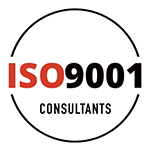Understanding and maintaining ISO 27001 compliance is like holding a key in today’s digital age. It’s more than just a set of guidelines; it’s a way for businesses to protect valuable information and build trust with clients and partners. Especially in a bustling city like Sydney, where businesses thrive and grow, maintaining compliance becomes even more important. Companies that follow these standards can easily ward off risks and ensure that their data management practices meet the best and latest international standards.
ISO 27001 focuses on ensuring that organizations keep data secure and well-managed. It’s not just some checklist but a structured way to manage sensitive information. Businesses that comply with ISO 27001 show that they’re committed to securing data, which not only improves their image but also assures clients that their information is safe. The good news? It’s not a hard road, especially if you know where to start and have the right techniques in your toolbox.
Understanding ISO 27001 Compliance
ISO 27001 is a set of best practices aimed at information security. Think of it as a guidebook that helps businesses handle data safely and securely. It covers everything from setting up a solid security management team to identifying possible risks and taking steps to address them. Following ISO 27001 helps businesses create a strong framework for their information security efforts.
Data security is a top concern for many businesses today. With so much information being shared and stored digitally, the chances of data breaches are higher. ISO 27001 acts like a shield, ensuring that businesses have measures in place to protect against unauthorized access and data loss. It emphasizes regularly checking and updating procedures to adapt to new threats.
To make it simpler, here’s a quick way to think about it:
– Identify Risks: Recognize what threats could affect the security of your information.
– Plan and Implement Safeguards: Put tools and processes in place to counter these risks.
– Monitor and Test: Regularly check if the safeguards work and adjust them if needed.
– Review and Improve: Keep improving the procedures to stay ahead of future challenges.
By understanding the foundations of ISO 27001 compliance, businesses can take confident strides in securing their data, ensuring they stay ahead in an ever-changing environment. Whether you’re a small startup or a large firm, the principles of ISO 27001 apply universally, giving you the peace of mind that your information is well-guarded.
Key Techniques for Achieving ISO 27001 Compliance
Reaching ISO 27001 compliance involves several key techniques that can guide your business through the process. The first step is recognising the importance of establishing clear roles and responsibilities within your organization. Everyone should know their duties when it comes to data protection.
Next, consider conducting a formal risk assessment. This allows you to identify potential threats to your information security and develop appropriate strategies to mitigate these risks. Think of it like protecting a vault—once you pinpoint where security might be weak, you can focus on bolstering those areas.
Training and awareness programs for employees are equally important. It’s essential that staff understand their role in maintaining compliance. Regular training sessions help keep teams updated on new security practices and how to respond to potential security issues. By educating your workforce, you create a culture of security consciousness that supports ongoing compliance.
Regular internal audits are also necessary to ensure compliance isn’t just achieved but maintained. These audits help identify any gaps in your procedures and provide an opportunity for continuous improvement. Make sure you have a routine in place for these checks so any compliance issues are addressed promptly.
Tools and Technologies to Support Compliance
With technology advancing rapidly, it’s vital to use the right tools to support ISO 27001 compliance. Various software solutions can assist businesses in managing their information security management systems more efficiently. These tools can automate many mundane tasks, reducing the chance of errors and freeing up resources for other essential activities.
– Security Information and Event Management (SIEM) Systems: These help monitor and analyse security events in real-time, providing insights into potential security threats.
– Data Loss Prevention (DLP) Tools: By preventing sensitive information from leaving an organisation, DLP tools help safeguard data and deter breaches.
– Encryption Software: This ensures data remains confidential and secure, even if it falls into the wrong hands.
Employing these technologies not only streamlines the compliance process but also strengthens the overall security posture of your company.
Common Challenges and How to Overcome Them
As with any process, achieving ISO 27001 compliance isn’t without its challenges. Businesses often face hurdles such as resource constraints, complex documentation, and maintaining employee engagement in security practices.
One common issue is keeping staff motivated and involved in security procedures. To tackle this, consider incorporating interactive training sessions that captivate and engage employees. Using real-life scenarios and hands-on activities encourage better understanding and retention of information.
Another challenge is managing the volume of documentation required. Streamlining processes with document management software can ease this burden by automatically organising, updating, and storing necessary paperwork.
Finally, when resources are tight, prioritise the most significant threats and focus on resolving those first. This allows you to allocate your limited resources where they will have the most impact.
Ensuring Continuous Improvement
Securing ISO 27001 compliance is an ongoing journey, not a destination. It calls for regular reviews and upgrades to stay aligned with changing business environments and emerging threats. Building a culture that values information security and its role in business continuity is important for long-term compliance.
Businesses that continuously strive to enhance their security practices witness benefits ranging from increased trust and reduced risk to better operational efficiency. The road to compliance may require commitment and resources, but the peace of mind and improved reputation make it all worthwhile in the end.
Thinking about stepping up your data security and compliance game? ISO 9001 Consultants can assist in seamlessly implementing strategies aligned with ISO 27001. Discover how focusing on ISO27001 can revolutionize your internal audit processes and enhance your security measures. Reach out to explore professional guidance tailored for your business needs.







